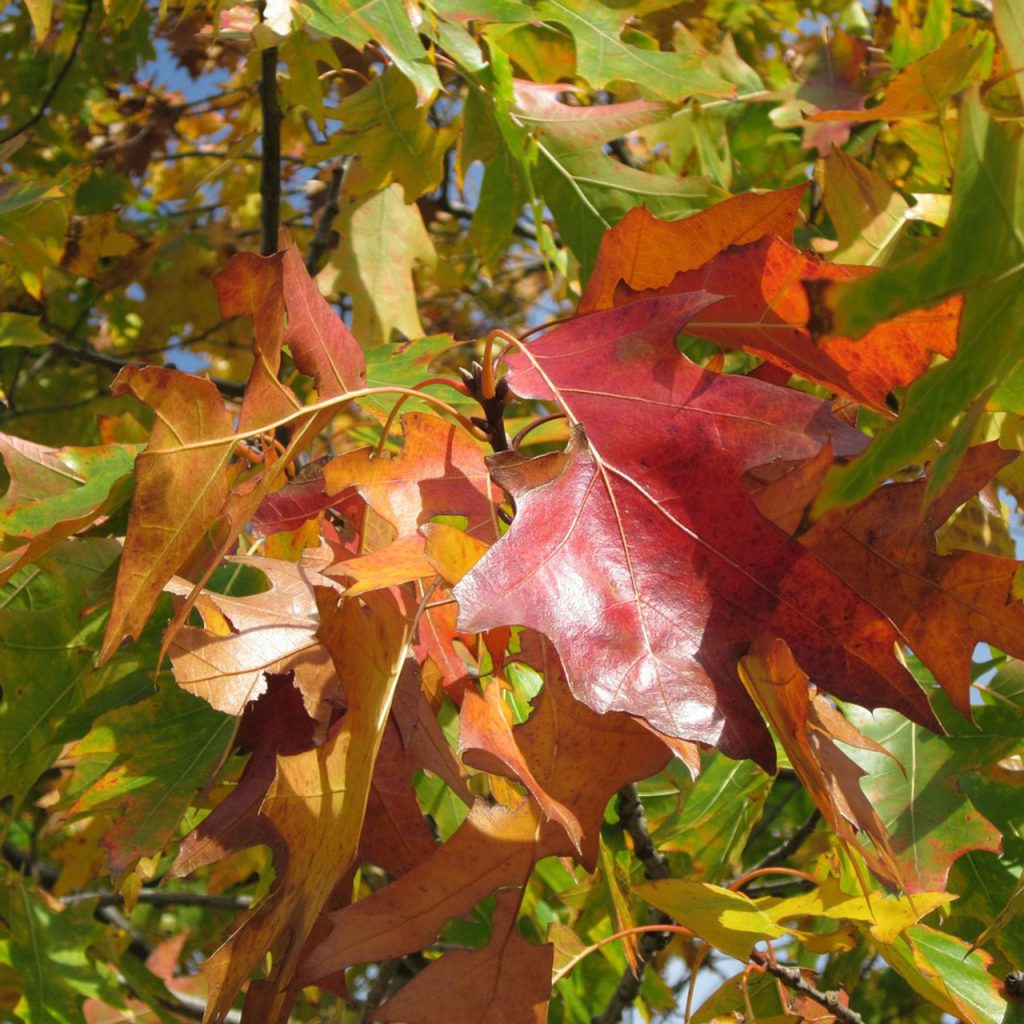Nuttall oak vs Shumard oak
Selecting the best oak tree for your landscape may be a rewarding endeavor, laden with considerations and decisions. Nuttall Oak and Shumard Oak are two leading competitors for Arbortrueca initiatives. These beautiful species have distinct features, each with its attraction and charm. Understanding the distinctions between Nuttall Oak and Shumard Oak is critical for making an informed decision that is consistent with your landscape concept. This comprehensive guide will shed light on the distinctions between these two oak kinds, diving into their origins, growth habits, foliar traits, and landscape value. Navigating this comparison will provide you with useful insights into the world of Nuttall Oak vs. Shumard Oak, allowing you to choose the best choice for your Arbortrueca Endeavour.
Nuttall oak vs shumard oak
Key Characteristics of Nuttall Oak
Origins and Growth Habits: The Nuttall Oak, scientifically known as Quercus texana, is endemic to the southeastern United States, including Florida, Georgia, and Louisiana. It flourishes in damp bottomlands and riverbanks with plenty of sunlight and well-drained soil. Nuttall Oak has a reasonably fast growth rate, making it an appealing choice for landscapes requiring speedy establishment.
One of Nuttall Oak’s distinguishing traits are its glossy, dark green leaves with deep lobes and pointy tips. These leaves turn vivid shades of red and orange in the fall, adding a distinctive visual aspect to the scene. The Nuttall Oak produces small to medium-sized acorns that serve as a valuable food source for wildlife, particularly birds. Nuttall Oak is regarded for its gorgeous fall foliage, which offers a picturesque display of hues ranging from blazing reds to golden oranges. Its beautiful form and appealing leaves make it a popular choice for parks, residential yards, and urban environments, where it offers both beauty and biodiversity.
Key Characteristics of Shumard Oak
Shumard Oak, also known as Quercus shumardii, is endemic to the eastern and central United States, ranging from Texas to Florida and north to Illinois. This towering tree can grow in a variety of soil types, including clay, loam, and sandy soils, and is commonly found in bottomlands, floodplains, and highland forests. Shumard Oak has a moderate to rapid growth rate, reaching astonishing heights and forming a broad, spreading canopy. Shumard Oak is recognized by its deeply lobed, glossy green leaves that turn a brilliant scarlet red in the fall, giving a spectacular display of colour. The tree produces enormous acorns with characteristic bowl-shaped tops, which are a valuable food source for wildlife such as birds, squirrels and deer. Shumard Oak’s great stature and beautiful fall hue make it a strong presence in any landscape setting. It thrives in parks, vast estates, and naturalized regions, where its imposing presence and vivid foliage add to the beauty and biodiversity of the surroundings.
Related posts:
Nuttall Oak vs Shumard Oak: A Comparative Analysis
When selecting Nuttall Oak and Shumard Oak for your landscape, it is critical to grasp the key differences between these two great species. Here’s a comparison chart to help you make an informed decision:
- Growth Characteristics: Both Nuttall Oak and Shumard Oak are fast-growing deciduous trees; however, their growth patterns differ slightly. Nuttall Oak has a more upright growth habit, whereas Shumard Oak typically produces a broader, spreading canopy.
- Leaf Morphology: Nuttall Oak leaves are typically smaller and deeper lobed than Shumard Oak leaves, which are bigger and less lobed. This distinction in leaf morphology can affect the overall appearance and feel of the tree’s foliage.
- Fall Foliage Colour: Both species have gorgeous fall foliage, however, Nuttall Oak’s leaves are shades of red and orange, and Shumard Oak’s leaves are a brilliant crimson red. The difference in fall color provides diversity and visual interest to the environment.
- Soil and Site Preferences: Nuttall Oak likes moist bottomlands with well-drained soil, but Shumard Oak may grow in a variety of soil types, including clay and loam. Understanding each species’ soil and site suitability is critical for effective cultivation.
- Acorn Characteristics: Nuttall Oak acorns are smaller in size than Shumard Oak acorns, which have prominent bowl-shaped tops. These changes in acorn properties have the potential to alter wildlife interactions and ecological dynamics.
By taking these crucial traits into account, you may find the ideal oak tree for your Arbortrueca project, resulting in a landscape that is both beautiful and diverse.
FAQS
Can I grow Nuttall Oaks and Shumard Oaks in my backyard?
Yes, Nuttall Oak and Shumard Oak trees can be planted in residential landscaping, as long as there is enough room for their maturity size.
Do Nuttall Oaks and Shumard Oaks require specific care?
While both species require little maintenance once established, it is critical to provide appropriate water, sunshine, and occasional trimming to ensure good development.
Are Nuttall and Shumard Oak trees appropriate for urban areas?
Yes, both species can tolerate urban conditions such as pollution and compacted soil, making them excellent for street planting and urban green spaces.
Do the Nuttall and Shumard oak trees attract wildlife?
Yes, both species produce acorns that are very appealing to wildlife, including as squirrels, birds, and deer, making them important contributors to local ecosystems.
Which oak tree provides superior fall color: Nuttall Oak or Shumard Oak?
Both Nuttall Oak and Shumard Oak trees have spectacular fall color, with Nuttall Oak showing shades of red and orange and Shumard Oak turning a bright scarlet red.
Conclusion
Finally, both Nuttall Oak and Shumard Oak have distinct characteristics and benefits, making them valuable additions to any landscape. Nuttall Oak has an upright growth habit, smaller leaves, and intense fall colors of red and orange, whereas Shumard Oak has a spreading canopy, huge leaves, and brilliant scarlet foliage. Understanding the variations in growth characteristics, leaf morphology, fall coloration, soil preferences, and acorn qualities is critical for choosing the best oak tree for your Arbortrueca project. Whether you like the graceful form and flaming fall colors of Nuttall Oak or the imposing presence and vivid crimson leaf of Shumard Oak, both species add to the landscape’s beauty and variety. By carefully examining your landscape’s needs and aesthetic preferences, you can make an informed decision that will provide years of enjoyment and environmental advantages. Choose thoughtfully and create a landscape that reflects the timeless elegance of Nuttall Oak or the stately majesty of Shumard Oak.





